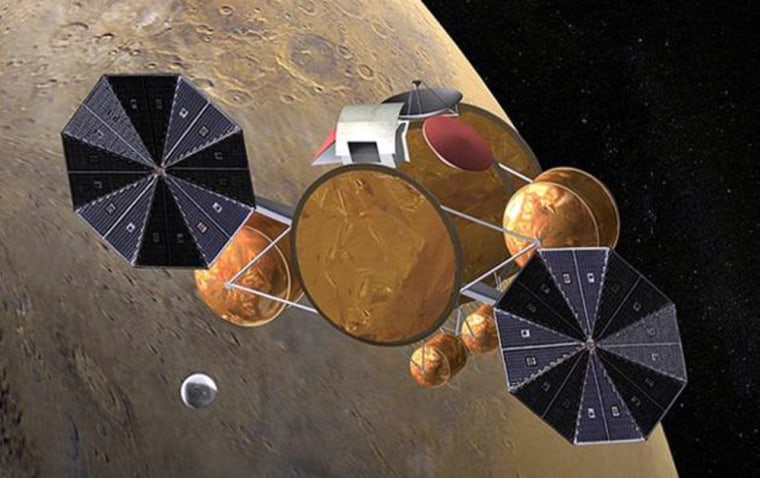NASA’s Genesis sample capsule not only stirred up dust and dirt when it crash-landed in Utah last week, but also debate concerning the return to Earth of future extraterrestrial samples — specifically, from Mars.
While the high-speed impact of the return canister was not planned, the capsule’s design did permit the survival of some samples. However, due to a breach of the science canister caused by the crash, the space specimens were contaminated once exposed to Earth’s atmosphere.
The Genesis probe and the homeward-bound Stardust spacecraft, which is carrying bits of a comet and interstellar particles, serve as precursor missions to snag, bag and lug back to Earth select pieces of Martian real estate.
NASA engineers and scientists have been grappling for decades with methods, procedures and the price tag for robotically returning Mars samples.
One concern is that Martian samples could contain microbial life. Whether that’s the case or not, great care in handling specimens of Mars is a high priority — not only to protect our planet from virulent biology, admittedly a low probability, but also guarding the samples from Earth contamination.
The desert dust kicked up by the Genesis is settling as scientists work to retrieve some of its precious cargo. But talk about how best to orchestrate a future Mars sample mission is far from coming to rest.
Trashed and twisted hardware
The Genesis sample canister augured into the Utah Test and Training Range at a speed of nearly 200 miles per hour (320 kilometers per hour). Onboard was a treasured stash of solar wind samples, embedded in breakable collector arrays.
With the capsule successfully rocketing through Earth’s atmosphere, the plan then called for a midair helicopter recovery of the sample return capsule underneath an unfurled parafoil — a winglike parachute.
But the parachute system failed to deploy. The return sample canister was banged up and severely damaged by the high-speed impact, leaving scientists to pluck through trashed and twisted hardware in the hopes of salvaging science data.
"We'll have to wait and see what the results and lessons learned from the Genesis mishap reviews are to see how they will affect Mars sample return designs," said Mark Adler, Mars Exploration Rover mission manager and an engineer at the Jet Propulsion Laboratory in Pasadena, Calif.
Maintain containment
As currently envisioned, the Mars sample return mission uses a completely passive entry vehicle — that is, hardware holding the specimen canister would be aerodynamically stable through landing on Earth. The entry craft for the sample return mission would not use or require a parachute, Adler explained.
"The samples of Martian rock and soil would be in a container designed to withstand the impact and maintain its integrity as well as the integrity of the samples," Adler said.
This design has been the lead candidate for about seven years, and a full-scale model was drop-tested at the Utah Test and Training Range in 2000, he said.
A Mars sample return mission is at least nine years away, so statements about the final design should be taken "with the appropriate-sized grain of salt," he noted.
